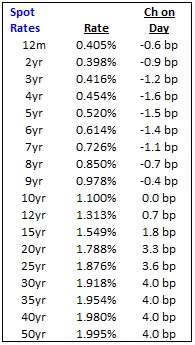Looks like govts. are increasingly moving into gold.
Govts. can support prices for at least as long as they increase purchases geometrically, which, operationally they can do without limit. It’s a political decision.
To get all the gold they want, govts. have to out bid the private sector, and then maybe each other as well.
That means when govt buying slows down, if it ever does, prices then fall to the private sector’s bid.
With precious few non hoarding uses for gold it’s all waste of human endeavor and a waste of all the other real resources that go into gold mining and refining, etc. But it’s all a very small % of world expenditure of real resources.
Bottom line, it’s another example of govt. ‘interference’ creating a distortion, but in this case the real resources expended- land, labor, capital, energy- are relatively small as a % of total resource consumption, and since gold can’t be eaten and isn’t used for shelter and clothing (ok, some ornamentation) the high price probably alters too few lives for the worse for a political backlash.
However, central bankers stuck in mythical inflations expectations theory with regards to the cause of inflation could react and cause problems that wouldn’t otherwise be there. I doubt the Fed falls into that category, but it’s not impossible.
Russia Buys 16 percent Of Global Gold Production
According to the Russian Central Bank, Russian gold reserves just hiked 1.1 million ounces in May. Given global mining production is just 6.8 million ounces a month, this represents 16.1% of monthly global mining production.
This is the largest one month purchase of gold by the Russian Central Bank, which has been buying gold at a rate of 250,000 ounces a month for the past three years, and comes just as Putin is pushing for a single world currency and last week revealed the currency’s first proof coin.
At the same time as Russia is quadrupling its gold purchases, Saudi Arabia just announced that it has more than doubled its gold holdings from 143 tonnes in the first quarter of 2008 to 322.9 tonnes. That’s 241,000 ounces a month — eerily similar to Russia’s purchases.
And nobody quite knows what China is doing right now, but they ain’t sellers. Between 2003 and 2009, China’s central bank bought an average of 76 tons of gold a year (185,000 ounces a month). The likelihood of China slowing its purchases is close to nil. and the likelihood of China letting Russia and Saudi Arabia get the better of it is negligible at best. Even if China is purchasing just 250,000 ounces a month, that would mean just thee central banks are sucking up 24% of global gold mine production. In all likelihood, it’s much higher.
If this trend continues, it’s going to have other central banks jumping on the bandwagon to buy gold — just as they jumped on the bandwagon to sell it in the 1990s — and will have a similar impact on the price. But in the opposite direction!
Cheers,
Peter.

